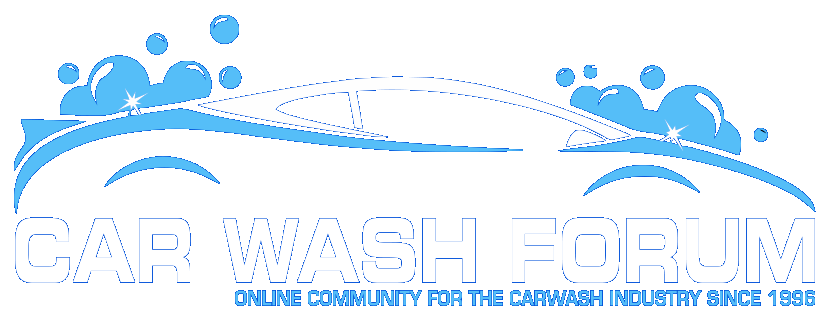Car Wash Forum
You are using an out of date browser. It may not display this or other websites correctly.
You should upgrade or use an alternative browser.
You should upgrade or use an alternative browser.
Hydrominder Screens on inlet?
- Thread starter Rudy
- Start date
OurTown
Well-known member
Previously we had hot water running to our Hydrominders and the inlet screens would get clogged more often than I would have thought. I found the best way to clean them is to remove them and blow compressed air through them. They are difficult to remove without damage so sometimes we put new ones in. I have moved all self serve systems with Hydrominders to make way for our new automatic equipment and will now run cold water to them. I plan to remove the inlet screens but run a mesh strainer on the supply line because they have a much larger surface area.
autoexpert
Banned
When I operated my two car washes, all our hydrominders were equipped with filter screens on the inlet side to prevent debris from clogging the system and ensuring efficient operation. It's surprising to hear that any setup would be missing these essential components, as they are crucial for maintaining the longevity and effectiveness of the hydrominders by filtering out particles that could cause malfunctions or reduce performance. Without these filters, the risk of damage and maintenance issues increases significantly.When I had my two washes, all hydrominders had filter screens on the inlet side. Not sure why you wouldn’t have them.
autoexpert
Banned
Do you use screens on the inlets to your hydrominders?
Are they necessary?
Yes, using screens on the inlets to your hydrominders is essential. These screens serve to filter out debris and particles that could otherwise clog or damage the hydrominders, ensuring smooth and efficient operation. Without them, you risk increased maintenance issues and potential system malfunctions, which can lead to downtime and costly repairs. Therefore, incorporating inlet screens is a necessary precaution to maintain the longevity and reliability of your hydrominders.
Earl Weiss
Well-known member
To clean without damage. 1. Don't remove the screen. Unscrew where the 3/8" fitting goes in to the valve and then blow out in direction opposite to water flow then screw back in. 2. If you must remove screen to try without damages still unscrew at valve and use a small bolt or top of pen to push it out from valve side. Digging it out will usually damage it.I found the best way to clean them is to remove them and blow compressed air through them. They are difficult to remove without damage
Earl Weiss
Well-known member
Made mistake of removing and had headaches with debris messing up operation. Don't know what type of hose you have feeding the hydrominder but I used 1/2" braided. I found 1/2" Barbed Male hose end fittings at Mc Master Carr and ordered enough to do all Hydrominders (Had trouble finding them at big Box Stores but you may be able to. ) Also, later added Banjo Strainer on manin Feed ine to reduce having to clean the screens since the Banjo filter is easy to clean.
German Auto Expert
Banned
Do you use screens on the inlets to your hydrominders?
Are they necessary?
Yes, screens on the inlets to hydrominders are necessary because they filter out debris and particles that could clog or damage the system, ensuring smooth and efficient operation. Without these screens, the hydrominders are more susceptible to maintenance issues and potential malfunctions, which can lead to increased downtime and repair costs. Therefore, using inlet screens is a crucial step in maintaining the reliability and longevity of your hydrominders.


